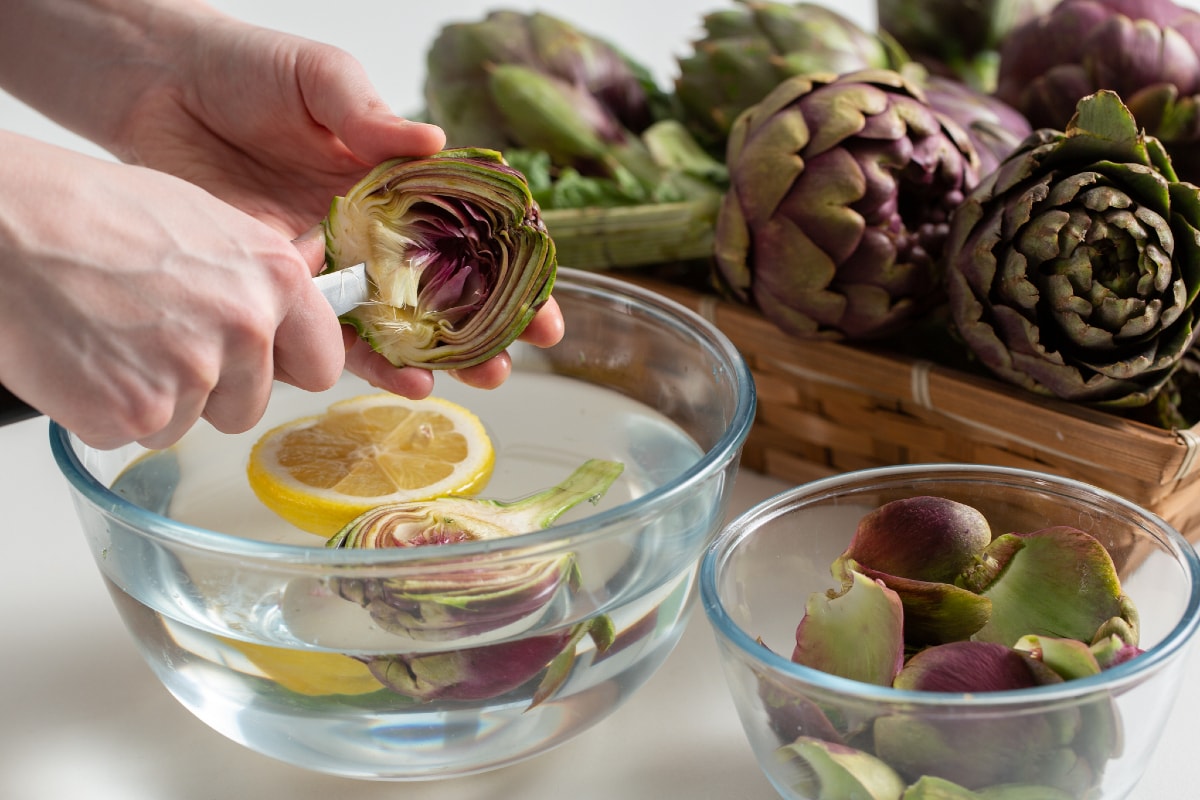Naples-style Braised Artichokes
- Easy
- 50 min
- Kcal 75


Artichokes are beloved vegetables and present in Italian cuisine. Sometimes the idea of cleaning them discourages purchase even when they tempt us from the market stalls in all their beauty! In this guide, we explain the essential steps to clean the two main varieties of artichokes: the thorny ones, typically winter, and the spineless artichokes like the Roman (mammole) or violet ones, typical of the spring season. In both cases, you will need acidulated water with lemon to prevent them from browning and, if you wish, gloves to protect your hands. Make sure the artichokes have a firm texture, closed leaves, and a long stem, then follow our instructions to remove all the waste and reach the heart, the tenderest and tastiest part. Cleaned artichokes will be excellent either raw in julienne, as in the artichoke salad, or cooked cut into wedges, like pan-fried artichokes. Alternatively, you can use them whole to make tasty stuffed artichokes and other unforgettable recipes from our tradition, such as Jewish-style artichokes or Roman-style artichokes. You just have to choose which dish to prepare and let our cooking school guide you!

To clean the artichokes, first rub your hands with lemon to prevent them from browning, then squeeze the juice into a bowl with water where you will rinse the artichokes after cleaning. For thorny artichokes, you can also use gloves if you prefer. First, remove the tougher outer leaves until you reach the lighter and tender heart 1, then cut off the tips with a straight cut 2. Shorten the stem to 1 1/2-2 inches from the base of the artichoke 3.

Peel the stem with a paring knife or vegetable peeler to remove the tougher outer layer 4, then round the base. If you do not intend to use them whole, divide the artichoke lengthwise and remove the choke with a melon baller 5; also check that there are no other tips to remove. Dip the artichokes in acidulated water 6, then you can cut them further into wedges or slices or proceed with the recipe.

To clean the 'mammole,' always remember to rub your hands with lemon first and acidulate the water with its juice. Start by removing the outer leaves at the base of the artichoke 7, then shorten the stem 8. If you want to make stuffed artichokes, you can completely remove the stem and set it aside for other preparations after peeling it. Round the base with a paring knife to remove the leaf attachment and any stem remnants 9.

If you left the stem attached, peel the outer layer 10. To remove the top part of the leaves, make a spiral cut by tilting the knife and starting from the middle of the artichoke 11; you should obtain the shape of a bud 12.

If you intend to use whole artichokes, gently open the leaves to create space for the filling 13, then remove the choke with a melon baller 14. Dip the 'mammole' in acidulated water to rinse off residues 15, then you can cut them or proceed with the recipe.